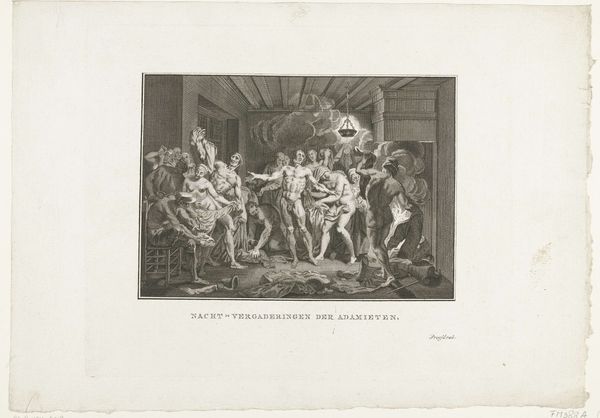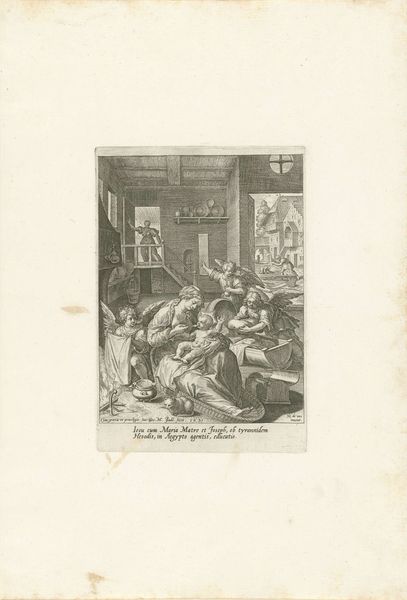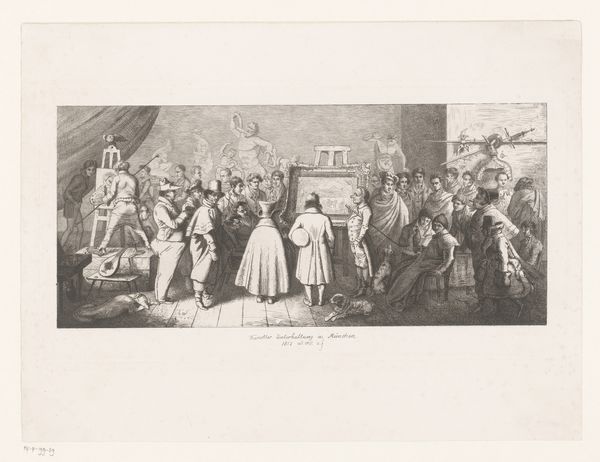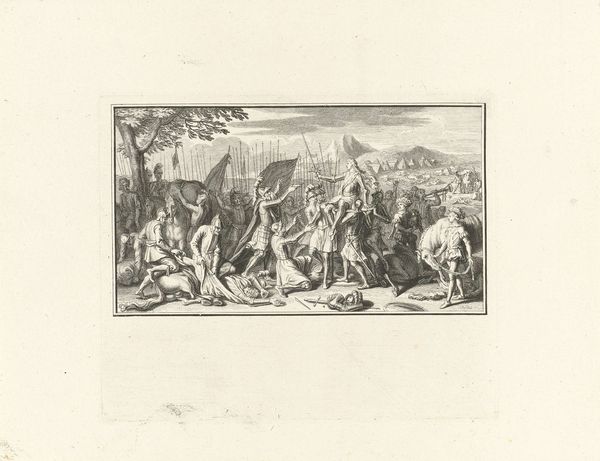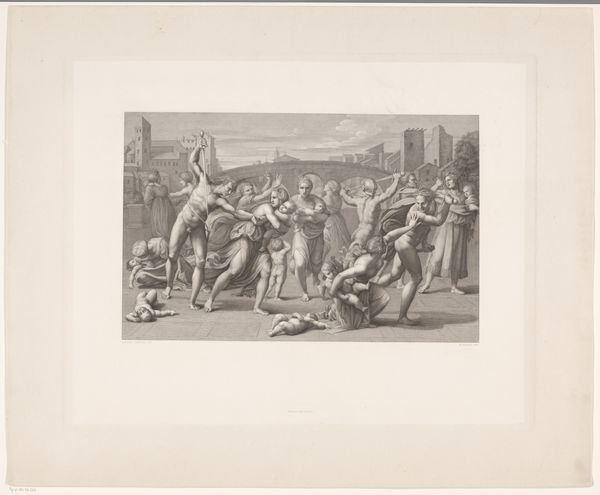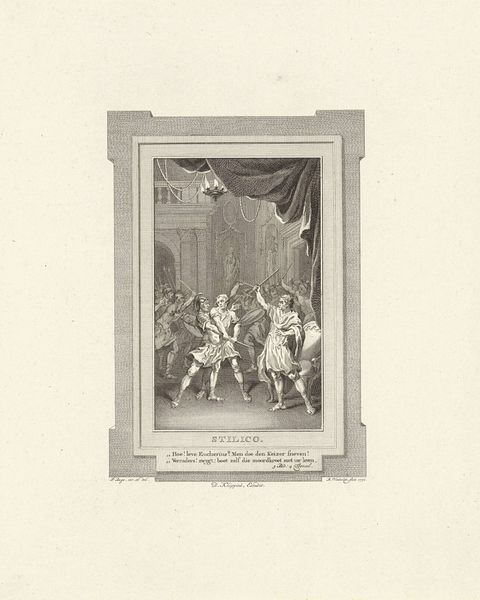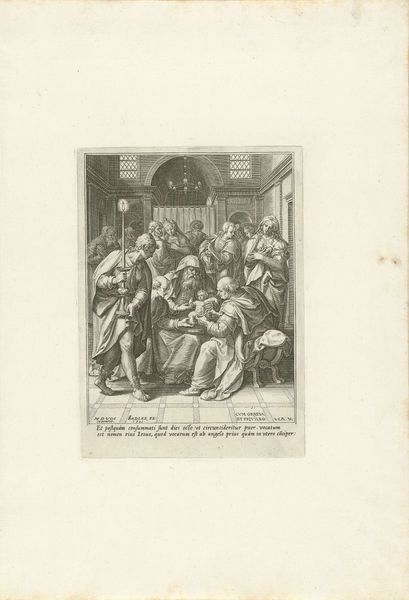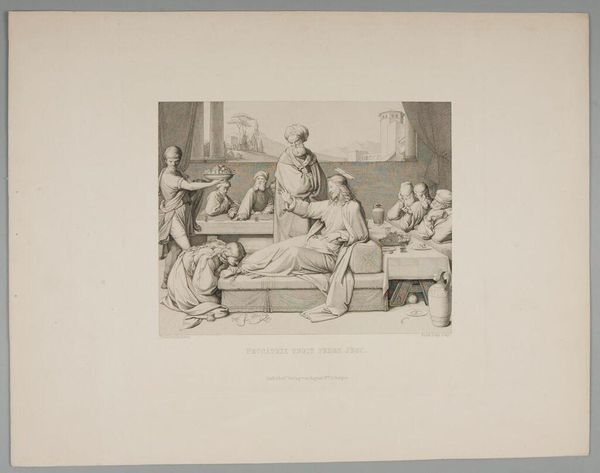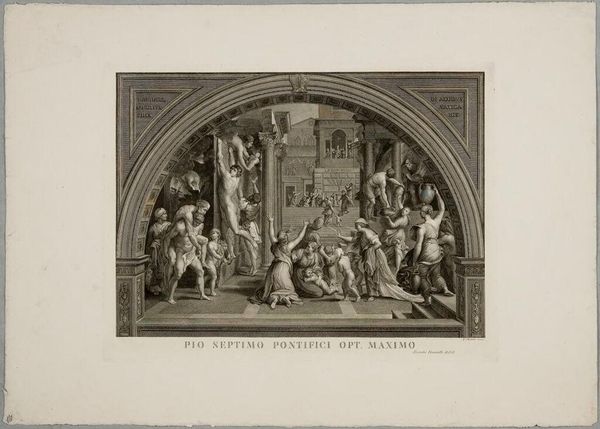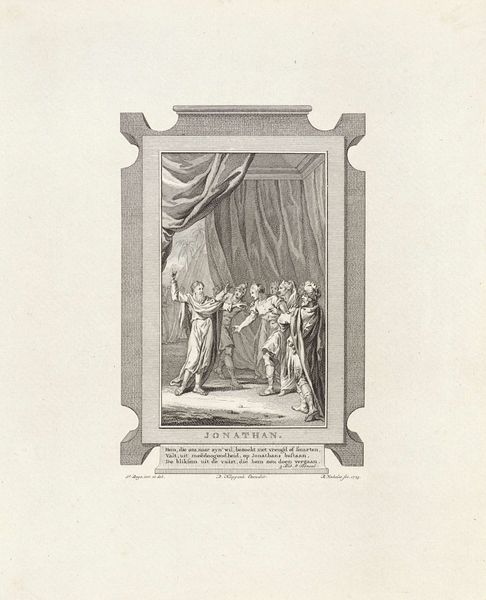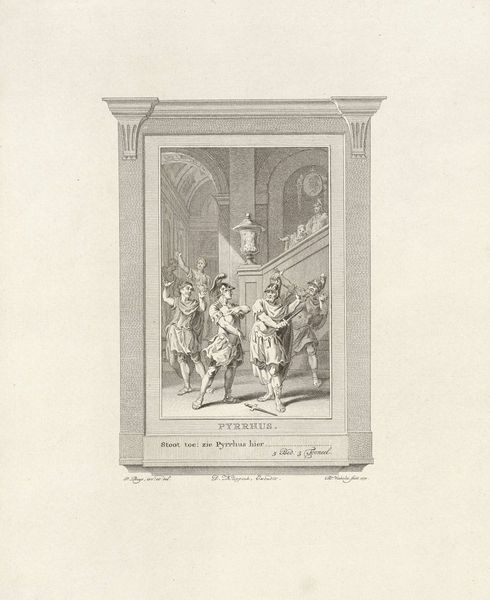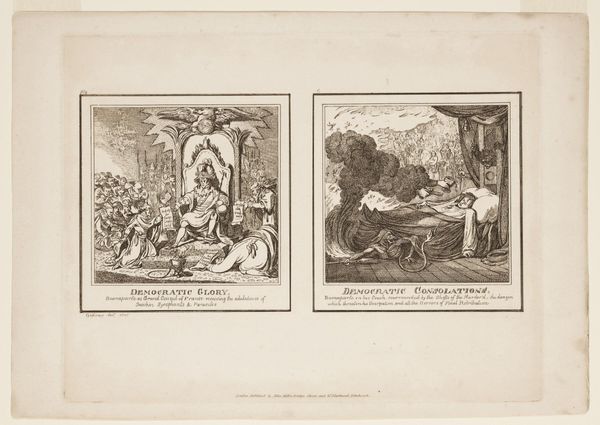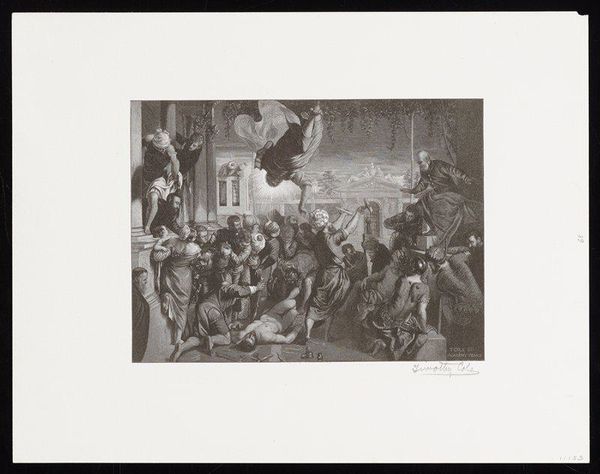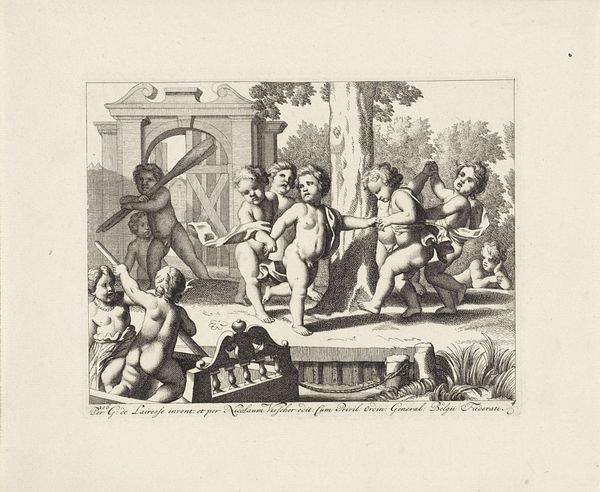
Huwelijksplechtigheden van de oorspronkelijke bevolking van Panama 1780
0:00
0:00
engraving
#
ink paper printed
#
old engraving style
#
engraving
Dimensions: height 222 mm, width 266 mm
Copyright: Rijks Museum: Open Domain
Editor: This engraving, titled "Marriage Ceremonies of the Indigenous People of Panama," dates back to 1780, and is attributed to Cornelis Brouwer. Created using ink on paper, it presents what seems to be a bustling scene. There's an energy to it that feels... staged. What historical context might shape our understanding of this depiction? Curator: It’s essential to remember that engravings like this weren't created in a vacuum. This was produced during a time of intense European colonialism. What do you think this means for the image's "authenticity" or objectivity? Is it a window into Panamanian indigenous culture, or a projection of European expectations and biases? Editor: It's hard to say definitively, but the emphasis on what looks like 'exotic' ritual, combined with the title itself, suggests a bit of the latter. How much of what we are seeing is actually observed versus constructed for a European audience? Curator: Precisely. Notice the idealized, almost neoclassical physiques of the figures. This borrows from European artistic traditions. What could this stylistic choice achieve in the context of colonial power? Does it emphasize difference or subtly imply a common humanity under a veneer of 'savagery'? Also, who was Brouwer, and what relationship did he have with the people he depicted? We must remember such depictions are often more about the culture that produces them than the culture being portrayed. Editor: I see what you mean. So by displaying it in a museum today, are we perpetuating the politics of imagery from the past, or is there value in showing it critically? Curator: Displaying such pieces critically allows us to engage with this complex history. We acknowledge the power dynamics inherent in its creation and reception. The museum setting transforms it from a straightforward documentation into a document ripe for deconstruction, prompting important conversations about colonialism and representation. What do you make of that? Editor: It certainly reframes my initial understanding, recognizing it as more of a cultural artifact of the *colonizers* than the *colonized*. It definitely feels much more problematic now, but in a productive way. Curator: Exactly. It highlights the public role of art in shaping perceptions and reinforcing—or challenging—historical narratives. I'm glad we could examine this from a different angle!
Comments
No comments
Be the first to comment and join the conversation on the ultimate creative platform.
